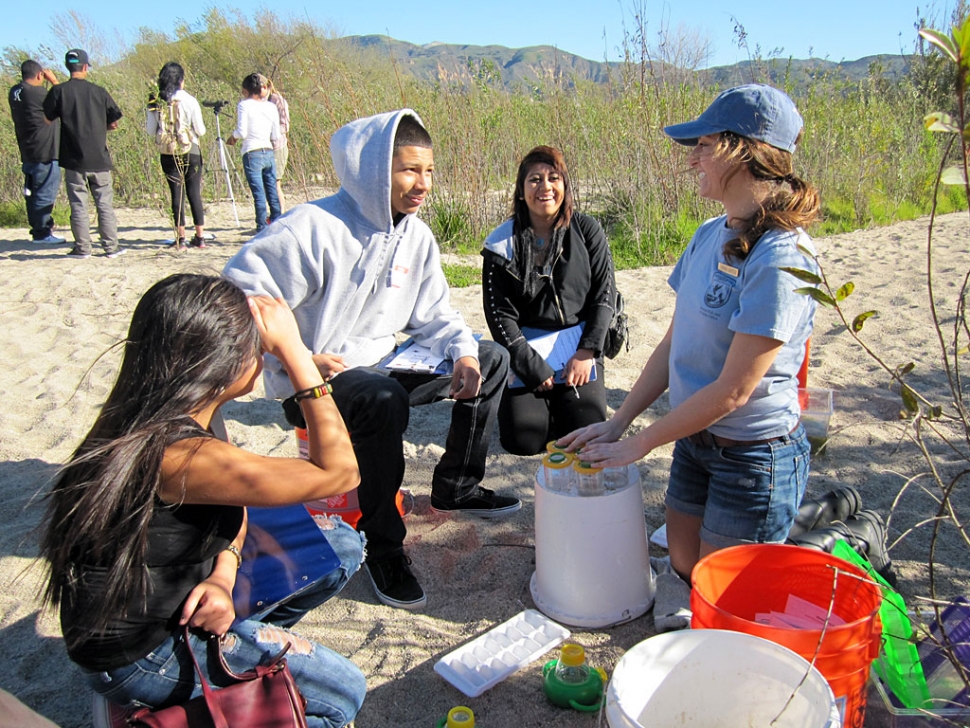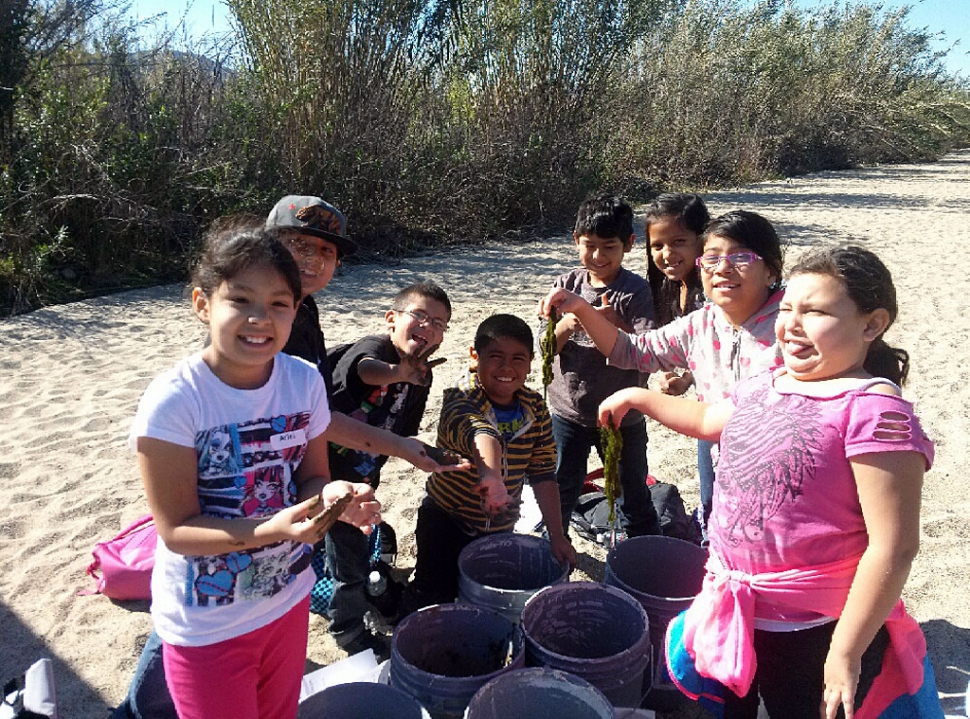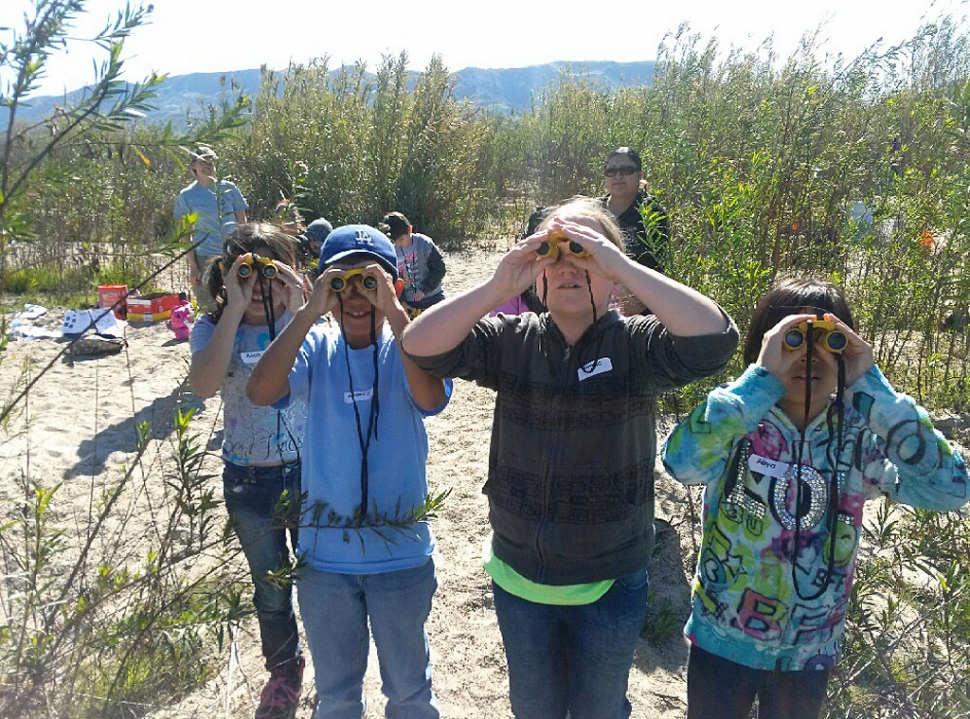|
Santa Clara River Program
 By Laura Todis — Wednesday, May 8th, 2013
  As the Santa Clara River flows 100 miles towards the ocean, it passes through the Fillmore Unified School District’s School Farm property. This year the School District began a program for students to visit the river and learn about this important habitat and resource in the community. The goals of the program are to provide students opportunities to visit and learn about the Santa Clara River, to restore portions of the habitat along the river, and to ultimately increase awareness about the Santa Clara River in the community. The Santa Clara River Program is funded by a grant from the Santa Clara River Trustee Council in partnership with US Fish and Wildlife Service and California Department of Fish and Wildlife. This year a total of six teachers and their classes participated in the program: Raymond Barrera, from Piru elementary; Kelly Myers, Tonya Gonzalez and Janet Bergamo from Mountain Vista; Kirk Richter Fillmore High School; and Laura Todis from Sierra High School. Each participating teacher received training at a teacher workshop prior to their trip, and brought their class out to the river for an all-day trip. On each trip students rotated through about 8 stations set up through out the river bottom. The stations were adjusted to the grade-level standards of the students, and all gave students “hands-on” learning opportunities. For example, at one station students looked through magnifying glasses to identify organisms living in the water. At another station student were taught how to use binoculars and field guides to identify birds. Another station gave students the opportunity to be “citizen scientists” and collect data about plants that was actually submitted to a national database. Ms. Myers was impressed by how much her 3rd grade students gained from the trip. “It honestly was an amazing trip! I cannot believe all that I learned, let alone what the kids learned.” Students were enthusiastic about what they learned. A second grade student in Mr. Barrera’s class was impressed with how many native species he learned about. “I learned about native birds, bugs, fish, red-tailed hawks, black phoebes, ravens, and salamanders. I also learned about Arroyo toads, Western pond turtles and Western toads.” A student in Ms. Gonzalez’s third grade class remarked, “I loved learning about plants that Native Americans use. It was cool because some are medicine if you get sick.” Another student in Ms. Gonzalez’s class summed up his experience: “I learned a lot. The insects were magnificent, the plants were extravagant, and the birds were absolutely extraordinary.” Ms. Myers was specifically excited about how the trips have changed the way her students are able to talk about science. “Their academic language developed going on this trip. For example, they aren't just saying “the river,” they know it is the “Santa Clara River bottom.” The students are using specific vocabulary instead of general. That is exciting, especially for our English language learners.” Ms. Todis also noticed that the trips have changed the way her students are engaging with science. “These trips have made science relevant to students. For example, instead of just reading about water quality in the classroom, students have been able to collect water samples from the river and actually conduct lab tests in the field to find out about the pH, nutrient content and organisms that live in the water. Students can see that their results contribute to an important picture about the health of the river in their community.” Also, Ms. Todis is excited about how the trips introduce students to professional biologists. “Working with Fish and Wildlife has exposed students to career opportunities related to science. Some students have been inspired to pursue related careers.” Next year some high school students will work more closely with the biologists as they help run stations at the field trips for younger groups. Ultimately, one of the goals for this program is for the students who participate to spread their knowledge about how special the Santa Clara River is. Ms. Myers explains, “The best part is that it is our local river. Because it is right here in the community, many of my students have said that they have gone back there and showed their parents/siblings what they learned.” Ms. Myers experienced this within her own family. “My daughter is in my class, and she thoroughly loved the trip and has educated both my husband and 8th grade son. So funny!” Next year, the program will be expanding to include at least 9 teachers. Each teacher will participate in one workshop in the fall and will bring their class to the river twice (once in the fall and once in the spring). Next year the program will include a few exciting new elements. For example, students will have an opportunity to participate in restoration of native habitat along the river. Ms. Todis, who helps coordinate the Santa Clara River Program, is excited about the future of this program. “This program continues to take shape and expand. Fillmore students are lucky to have this opportunity and I look forward to helping more teachers bring their students out to the river next year!” |
